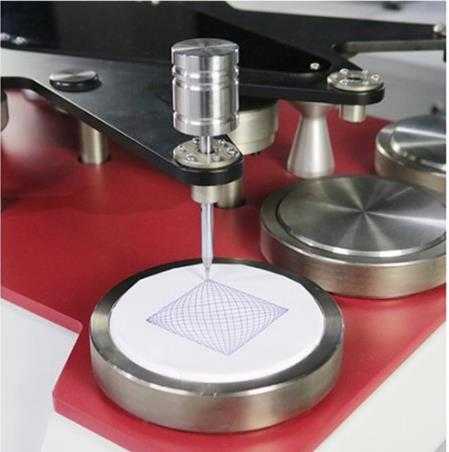Site: Home > News and events 

Methods And Relevant Test Equipments For Abrasion Test
An abrasion test is a test used to measure the resistance of a material to wear stemming from sliding contact such as rubbing, grinding, or scraping against another material. An abrasion test may also be referred to as wear testing, as an abrasion resistance test, or simply as a resistance test. Wear testing is of interest in a number of technical fields, including civil and mechanical engineering, reliability engineering, metallurgy, and geology. These tests are of importance in ensuring the durability of a material in a particular product or application, and in ensuring that material that erodes because of abrasion does not cause environmental or safety hazards in the production or test environments or in use of the product.

Several factors are typically considered in developing or selecting an appropriate abrasion test for the application at hand. The shape of the contact area is taken into consideration, as is the composition of the two surfaces making contact with one another. Speed of sliding contact between the two surfaces, the force with which they act on one another, and the duration of contact between them may also be considered. In addition to the materials themselves, the environment in which they are making contact also plays a role in selecting an appropriate abrasion test.
Most abrasion tests depend on applying energy to the fabrics and measuring their response to it. The manner of transferring the energy from machine to the fabric is different for different machines, but the basic principles are the same .
There are three types of abrasion in terms of occurrence; flat, edge and flex abrasion. Therefore different abrasion test methods have been described by the abrasion type, the test head movement or testing device setup. The differences among the procedures include the type of equipment, abradant (the material that rubs against the specimen), material used (including woven, nonwoven, and knit apparel fabrics, household fabrics, industrial fabrics, and floor coverings) and assessment method. In all of the test methods, the tested specimen is rubbed in a particular manner against an abradant which may be a fabric, or a emery sheet for either a certain amount of time for a certain number of strokes or cycles .
ASTM and ISO define several methods to quantify abrasion resistance of textile materials and introduce methods for the evaluation of abraded fabrics. However, there is not a linear relationship between successive measurements using any of these methods and progressive amounts of abrasion . In follow Table , these test methods and relevant test equipments are given.
| Test Standard | Testing Device / Method | |
| ASTM D 4966 | Standard Test Method for Abrasion Resistance of Textile Fabrics | Martindale Abrasion Tester |
| ASTM D 3884 | Test Method for Abrasion Resistance of Textile Fabrics |
Rotary Platform DoubleHead (RPDH) |
| ASTM D 3885 |
Test Method for Abrasion Resistance of Textile Fabrics |
Flexing and Abrasion Method |
| ASTM D 3886 |
Test Method for Abrasion Resistance of Textile Fabrics |
Inflated Diaphragm |
| ASTM D 4157 |
Test Method for Abrasion Resistance of Textile Fabrics |
Oscillatory Cylinder Method |
| ASTM D 4158 |
Test Method for Abrasion Resistance of Textile Fabrics |
Uniform Abrasion Method |
|
AATCC-93 Test Method |
Abrasion Resistance of Fabrics: Accelerator Method |
Accelerator Method |
| ISO 12947-1 |
Determination of the abrasion resistance of fabrics by the Martindale method Part 1: Martindale abrasion testing apparatus |
Martindale Abrasion Tester |
| ISO 12947-2 |
Determination of the abrasion resistance of fabrics by the Martindale method Part 2: Determination of specimen breakdown |
Martindale Abrasion Tester |
| ISO 12947-3 |
Determination of the abrasion resistance of fabrics by the Martindale method Part 3: Determination of mass loss |
Martindale Abrasion Tester |
| ISO 12947-4 |
Determination of the abrasion resistance of fabrics by the Martindale method Part 4: Assessment of appearance change |
Martindale Abrasion Tester |
2019-11-07 17:15
- Related News
What's the difference between a hydraulic oil filter and a regular oil filter?
Interpretation of Paper Tear Strength Standards
What is the significance of the LA abrasion test?
What is a UTM machine used for?
What is the principle of a capillary rheometer?
What is the difference between conical and parallel twin-screw extruders?
What is the ISO standard for color fastness?
What is the use of a roundness tester?
The Role of Dust-Proof Robot Protective Clothing
What is the difference between Taber and Martindale abrasion tests?
